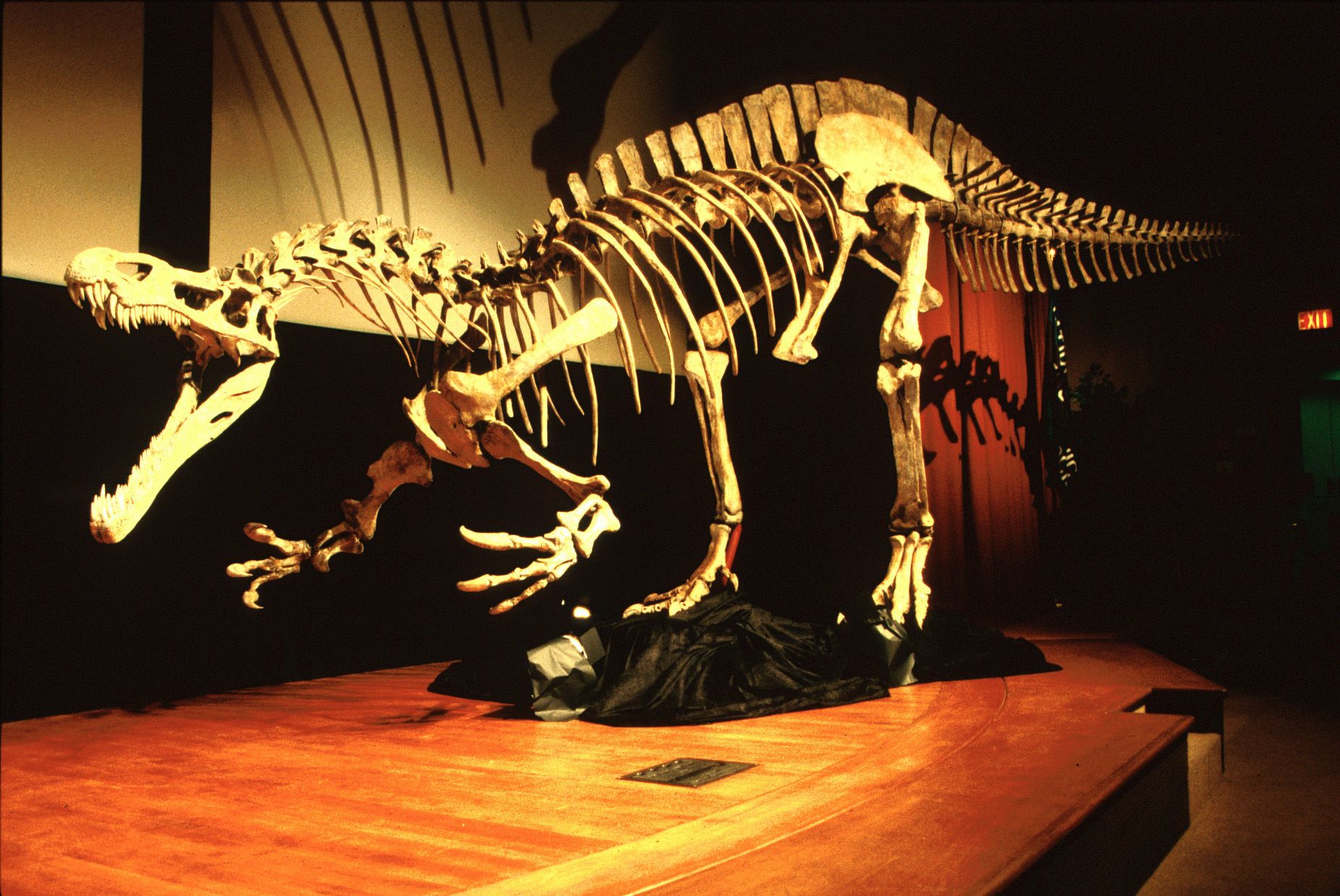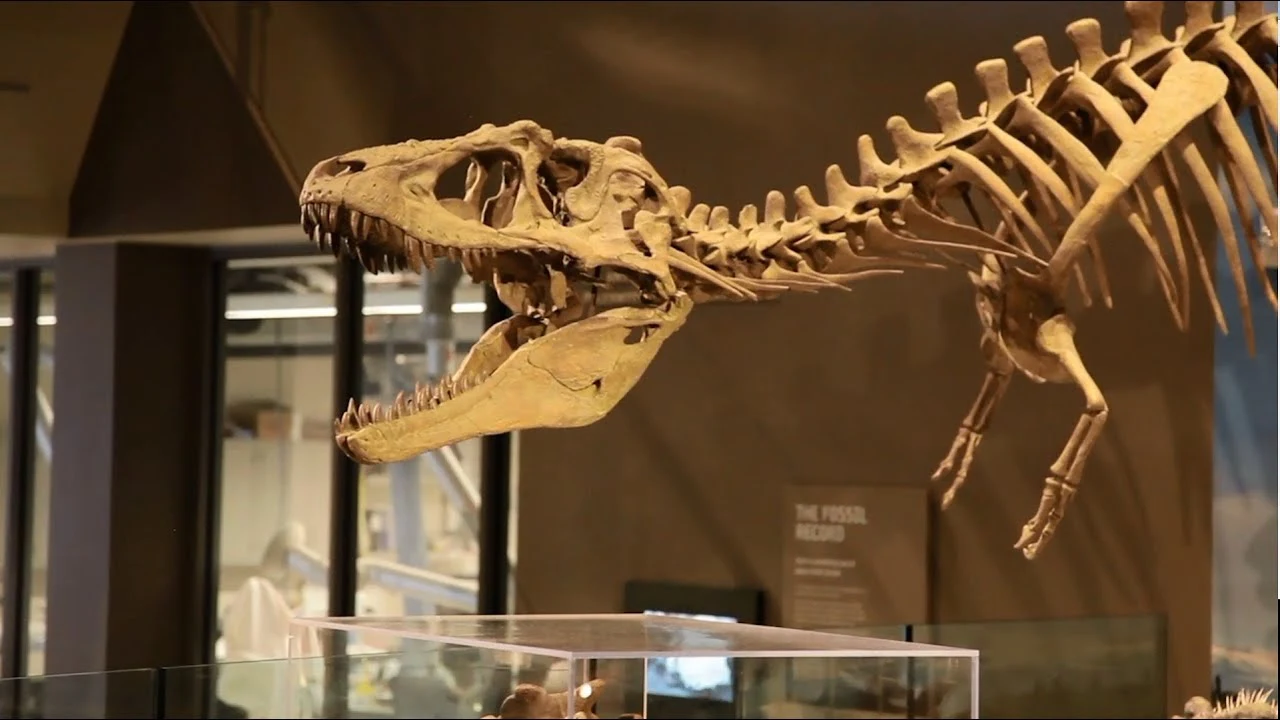What Dinosaur Has 500 Teeth – Nigersaurus was a 30-foot, plant-eating Dinosaur that inhabited the region that is now the Sahara Desert 110 million years ago. In the vibrant ecology of Nigersaurus lived carnivorous dinosaurs like Suchomimus and herbivores like Ouranosaurus, Lurdusaurus, and the Super Croc.

Nigersaurus had a delicately shaped head, and an enormously largemouth lined with teeth explicitly made to sift through vegetation close to where they were. The exceptionally wide, straight-edged muzzle of this bizarre, long-necked Dinosaur, crowned with more than 500 replaceable teeth, serves as its defining feature. One of the earliest fossil dinosaur skulls to be digitally recreated using CT scans is the first skull of Nigersaurus.
500-Teeth Dinosaur: What Kind?
We had a fantastic first week on the field! Every dune is full of unique finds. We discovered the remains of the long-necked Dinosaur Nigersaurus on our first day. You may have heard of Nigersaurus, the name we assigned to bones discovered on our previous visit to this location three years prior. Long-necked dinosaurs like the sauropod have unusual skulls with up to 500 thin teeth. Finding the remaining pieces of this rare Dinosaur will let us identify it more precisely and rebuild it for the benefit of the public.
We only discovered the skeleton after a few days, but we are making significant progress toward our goal! The skeleton’s tail, which is lying on its side, curves upward. The curve of the backbone is around 15 feet long. The 110 million-year-old bones were painstakingly cleaned of sand, and canals were created between the most significant portions of the bones. The skeleton will soon be removed from the field and returned to the lab once we plaster each component.
However, Nigersaurus is more than just that. Chris took us to a flat patch of purple-hued sandstone, where he found the upper jaw of a young Nigersaurus. It’s small enough to fit on the coin’s rim! The Nigersaurus was probably a hatchling when it died and became a fossil less than a year after it was born.
An emerging carnivore
Gabe discovered something unique while moving across a level surface. In front of her feet, the bones of a recently discovered meat-eating dinosaur were exposed. Sand on her lower jaws was washed away. The bone that was adjacent was a component of the hip and backbones. This client fits the mould. The skeleton from which the bones were retrieved might have been 30 feet long! We hope to find more information about this unique species during the fieldwork season.
Enormous crocodile
We are eager to discover more than just dinosaurs. We want to identify every kind of animal and plant that existed 110 millennia ago in the old forests and waterways. During the first week of our work, some of the more well-known fossils we discovered included the enormous crocodile Sarcosuchus.
Compared to the most significant extant crocodile, the creature was substantially larger. We estimate it was over 40 feet long based on the 6-foot skull we discovered during the first week. The armour plates on its back were about the size of one foot. To determine the magnitude of this beast, we spread out the entire squad.
Hans has been working with a team that includes Allison and Dave to dig the new spot. They discovered another skull from the same species lying next to the larger one as they began searching to find the head. Knowing in their hearts that the two crowns would weigh around 600 pounds when plastered in plaster, they carved a block of rock that held them.
Dinosaur species Nigersaurus
Nigersaurus, which is Greek meaning “Niger Lizard” (pronounced NYE-jer-SORES).
Sereno, Beck, Dutheil, Larsson, Lyon, Moussa, Sadleir, Sidor, Varricchio, G.P. Wilson, and J. A. Wilson named the species in 1999.
Saurischia, Sauropodomorpha, Sauropoda, Diplodocidae, and Rebbachisauridae are the several classifications.
Type: N. taqueti (Type).
Habitat: Elrhaz Formation, Africa, Niger
Early Cretaceous Period of History (110 million years ago)
Approximately 30′ in length and 5 tonnes of volume
Plant-based diet
Particular Features Differential: Hundreds of teeth in big jaws and a very short neck
Aptian, also known as Albian from the Cretaceous, is the time frame.
Nigersaurus Definition
Nigersaurus, “Niger reptile” or “Niger lizard,” refers to one of the earliest dinosaurs ever unearthed. A 30-foot-tall, plant-eating dinosaur, Nigersaurus. It is a sauropod species similar to the Diplodocus. It existed between 120 and 105 million years ago, during the mid-Cretaceous period in the Aptian or Albian era.
It was discovered among the large fossil vertebrate species of the Elrhaz Formation in the Republic of Niger’s Gadoufaoua region. In 1976, the first dinosaur fossils were found. But it wasn’t given a name until 1999 when more complete remains were found and recognised.
Nigersaurus Taqueti is the only species that make up the genus. It bears the name Philippe Taquet in honour of the French palaeontologist who made the initial find of remains.
Skull of a nigersaurus
The skull was made to provide food. It had four enormous side fenestrae that opened within the bones and head. It had a broad nose and more than 500 teeth replaced every 14 days. Keratinous that resembled a large beak may have coated the jaws.
Only the tetrapod Nigersaurus has teeth extending laterally across the front and jaws broader than the head. The upper jaw’s teeth could be 20–30% bigger than the lower jaw’s.
There were nine replacement teeth in the jaw for every functioning tooth. Dental batteries included more than 500 replacement and active teeth, with 68 columns in the upper jaw and 60 in the lower jaws.
Nigersaurus teeth had extremely uneven enamel that was 10 times thicker on the side that faced the outside than the interior.
Size of a nigersaurus
Nigersaurus is a species that, like all sauropods, has a tiny head, huge rear legs, and a large tail. Nigersaurus, a member of that lineage, was relatively diminutive, with a body length of 9 m (30 feet) and a femur measuring only 1 mm (3 3 inches).
Nigeriasaurus Size
It could have weighed up to 4 tonnes (4.4 shorter tonnes), which is about the same as an elephant today. With 13 cervical vertebrae, the sauropod’s neck was more straightforward than average. Most rebbachisaurids have shorter necks and can only reach lengths of 10 metres (33 feet). Rebbachisaurus was the only member of the family to grow to the size of the more enormous sauropods.

Amazing Facts About Nigersaurus
- “Nigersaurus” is a slang term for “Niger Lizard” (it was discovered in the country of Niger).
- Nigersaurus was a herbivorous animal.
Nigersaurus was a Sauropod, a vast, closely related group of quadrupedal (plant-eating) dinosaurs with long necks called Sauropods.
3. is referred to as the “Mesozoic cow.” The Nigersaurus’ broad muzzle and tearing teeth were intended to come on grass that was growing on the ground (for the record, ingesting grass wasn’t an option as grasses had not yet started to emerge in its period); this is thought to be the animal’s primary mode of subsistence.
- Nigersaurus was a long-necked dinosaur with a “short neck.” Typically, sauropods are recognised for having enormous necks, and some species with well-endowed bodies even had heads that extended more than 35 feet from the shoulders. Nigersaurus and its close relatives, collectively known as the “Rebbachisauridae” (“Rebbachisauridae”), weren’t the most notable species to brag about in this specific department.
- Nigersaurus had a fair amount of headlight. The skull bones in the animal’s head were fragile. Some are almost transparent.
- It took decades for experts to grasp how peculiar this creature was. Nigersaurus was given its official name for the first time in 1976, but it wasn’t until the second half of the 2000s that palaeontologists had a clear idea of what the animal looked like. Why?
This Dinosaur’s skeleton was hollow in a few spots, making it brittle and prone to distortion. Although several specimens were available in the years before 1997, no high-quality ones were discovered. Because of this, for long years, no one thought the Nigersaurus was anything other than a regular, everyday sauropod.
7. The Saurischia (“lizard-hipped”) order of dinosaurs included the Nigersaurus. This indicates that, although distantly unrelated to lizards, Nigersaurus had pelvic bones with a comparable morphology.
8: Nigersaurus was an animal that lived between 119 and 99 million years ago during the Cretaceous period.
- For a Sauropod, Nigersaurus possessed a remarkably distinctive mouth. It had a massive mouth, comparable to a vacuum cleaner (more comprehensive than the rest of its skull), and devoured its food with hundreds of small, pointed teeth.
- We have discovered fragments of tiny Nigersaurus babies. Despite having a length of about 30 feet, a newborn Nigersaurus’ jawbone was so little that, in the words of palaeontologist Paul Sereno, it could “fit onto the top of an entire sterling dollar.”
- There was much to be desired in the Nigersaurus’ sense of smell. Most likely, Nigersaurus didn’t spend much time using its nose. The animal’s long nostrils were visible when the brain cavity was opened up, but the herbivore’s stinky lobes—which help the brain recognise smells—were notably smaller.













